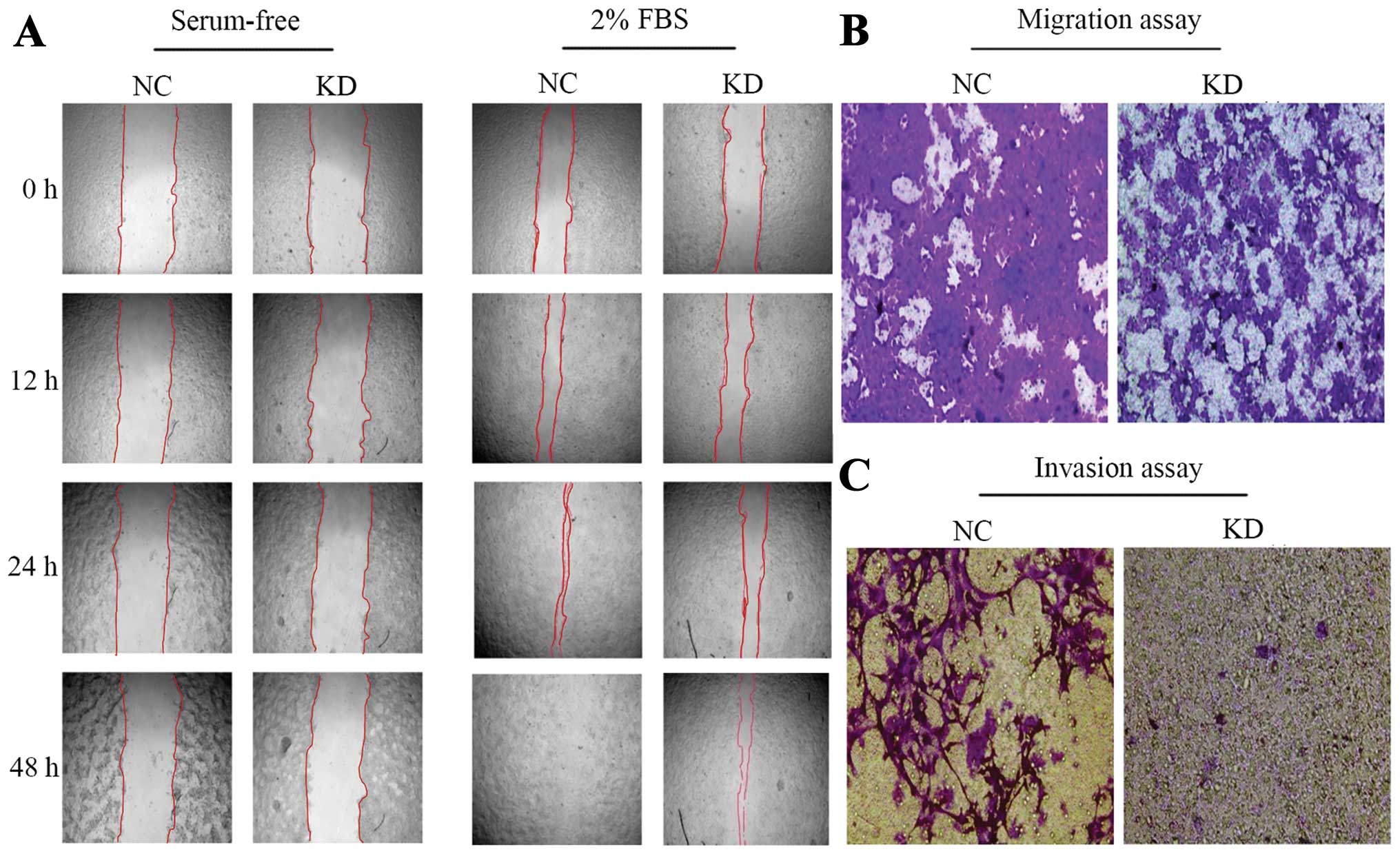|
1
|
Siegel R, Ma J, Zou Z and Jemal A: Cancer
statistics, 2014. CA Cancer J Clin. 64:9–29. 2014. View Article : Google Scholar : PubMed/NCBI
|
|
2
|
Jemal A, Bray F, Center MM, Ferlay J, Ward
E and Forman D: Global cancer statistics. CA Cancer J Clin.
61:69–90. 2011. View Article : Google Scholar : PubMed/NCBI
|
|
3
|
Berry DA, Cronin KA, Plevritis SK, et al:
Effect of screening and adjuvant therapy on mortality from breast
cancer. N Engl J Med. 353:1784–1792. 2005. View Article : Google Scholar : PubMed/NCBI
|
|
4
|
Fong PC, Boss DS, Yap TA, et al:
Inhibition of poly(ADP-ribose) polymerase in tumors from BRCA
mutation carriers. N Engl J Med. 361:123–134. 2009. View Article : Google Scholar : PubMed/NCBI
|
|
5
|
Troyanovsky B, Levchenko T, Månsson G,
Matvijenko O and Holmgren L: Angiomotin: an angiostatin binding
protein that regulates endothelial cell migration and tube
formation. J Cell Biol. 152:1247–1254. 2001. View Article : Google Scholar : PubMed/NCBI
|
|
6
|
Patrie KM: Identification and
characterization of a novel tight junction-associated family of
proteins that interacts with a WW domain of MAGI-1. Biochim Biophys
Acta. 1745:131–144. 2005. View Article : Google Scholar : PubMed/NCBI
|
|
7
|
Levchenko T, Aase K, Troyanovsky B, Bratt
A and Holmgren L: Loss of responsiveness to chemotactic factors by
deletion of the C-terminal protein interaction site of angiomotin.
J Cell Sci. 116:3803–3810. 2003. View Article : Google Scholar : PubMed/NCBI
|
|
8
|
Ernkvist M, Aase K, Ukomadu C, et al:
p130-Angiomotin associates to actin and controls endothelial cell
shape. FEBS J. 273:2000–2011. 2006. View Article : Google Scholar : PubMed/NCBI
|
|
9
|
Bratt A, Birot O, Sinha I, et al:
Angiomotin regulates endothelial cell-cell junctions and cell
motility. J Biol Chem. 280:34859–34869. 2005. View Article : Google Scholar : PubMed/NCBI
|
|
10
|
Wells CD, Fawcett JP, Traweger A, et al: A
Rich1/Amot complex regulates the Cdc42 GTPase and apical-polarity
proteins in epithelial cells. Cell. 125:535–548. 2006. View Article : Google Scholar : PubMed/NCBI
|
|
11
|
Ernkvist M, Birot O, Sinha I, et al:
Differential roles of p80- and p130-angiomotin in the switch
between migration and stabilization of endothelial cells. Biochim
Biophys Acta. 1783:429–437. 2008. View Article : Google Scholar : PubMed/NCBI
|
|
12
|
Ernkvist M, Luna Persson N, Audebert S, et
al: The Amot/Patj/Syx signaling complex spatially controls RhoA
GTPase activity in migrating endothelial cells. Blood. 113:244–253.
2009. View Article : Google Scholar :
|
|
13
|
Zheng Y, Vertuani S, Nyström S, et al:
Angiomotin-like protein 1 controls endothelial polarity and
junction stability during sprouting angiogenesis. Circ Res.
105:260–270. 2009. View Article : Google Scholar : PubMed/NCBI
|
|
14
|
Jiang WG, Watkins G, Douglas-Jones A,
Holmgren L and Mansel RE: Angiomotin and angiomotin like proteins,
their expression and correlation with angiogenesis and clinical
outcome in human breast cancer. BMC Cancer. 6:162006. View Article : Google Scholar : PubMed/NCBI
|
|
15
|
Zhao B, Li L, Lu Q, et al: Angiomotin is a
novel Hippo pathway component that inhibits YAP oncoprotein. Genes
Dev. 25:51–63. 2011. View Article : Google Scholar : PubMed/NCBI
|
|
16
|
Levchenko T, Veitonmäki N, Lundkvist A, et
al: Therapeutic antibodies targeting angiomotin inhibit
angiogenesis in vivo. FASEB J. 22:880–889. 2008. View Article : Google Scholar
|
|
17
|
Ranahan WP, Han Z, Smith-Kinnaman W, et
al: The adaptor protein AMOT promotes the proliferation of mammary
epithelial cells via the prolonged activation of the extracellular
signal-regulated kinases. Cancer Res. 71:2203–2211. 2011.
View Article : Google Scholar : PubMed/NCBI
|
|
18
|
Chan SW, Lim CJ, Chong YF, Pobbati AV,
Huang C and Hong W: Hippo pathway-independent restriction of TAZ
and YAP by angiomotin. J Biol Chem. 286:7018–7026. 2011. View Article : Google Scholar : PubMed/NCBI
|
|
19
|
Wang W, Huang J and Chen J:
Angiomotin-like proteins associate with and negatively regulate
YAP1. J Biol Chem. 286:4364–4370. 2011. View Article : Google Scholar :
|
|
20
|
Dai X, She P, Chi F, et al:
Phosphorylation of angiomotin by Lats1/2 kinases inhibits F-actin
binding, cell migration, and angiogenesis. J Biol Chem.
288:34041–34051. 2013. View Article : Google Scholar : PubMed/NCBI
|
|
21
|
Chan SW, Lim CJ, Guo F, Tan I, Leung T and
Hong W: Actin-binding and cell proliferation activities of
angiomotin family members are regulated by Hippo pathway-mediated
phosphorylation. J Biol Chem. 288:37296–37307. 2013. View Article : Google Scholar : PubMed/NCBI
|
|
22
|
Hong W: Angiomotin’g YAP into the nucleus
for cell proliferation and cancer development. Sci Signal.
6:pe272013. View Article : Google Scholar
|
|
23
|
Yi C, Shen Z, Stemmer-Rachamimov A, et al:
The p130 isoform of angiomotin is required for Yap-mediated hepatic
epithelial cell proliferation and tumorigenesis. Sci Signal.
6:ra772013. View Article : Google Scholar : PubMed/NCBI
|














